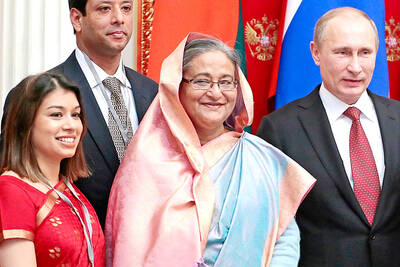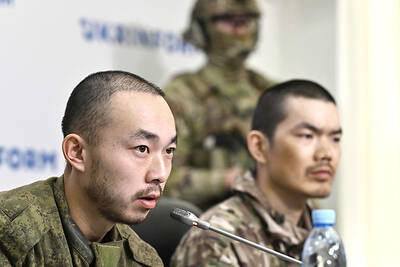Africa and much of South Asia face extreme risk from climate change but top carbon polluters will be relatively shielded from its ravages, according to a ranking of 166 countries obtained by AFP on Wednesday.
Somalia, Haiti and Afghanistan top the Climate Change Vulnerability Index, calculated from dozens of variables measuring the capacity of a country to cope with the consequences of global warming.
“We wanted to look at what is going to impact human populations,” said Fiona Place, environmental risk analyst at Maplecroft, a Britain-based firm that provides global risk intelligence for businesses.
Even if the world agrees at make-or-break climate talks in December to slash carbon dioxide emissions, many of those impacts — rising sea levels, increased disease, flooding and drought — are already inevitable, UN scientists say.
Of the 28 nations deemed at “extreme risk”, 22 are in Africa.
Bangladesh and Sri Lanka are similarly threatened, with Pakistan right on the edge and India not far behind.
At the other end of the spectrum, Norway, Finland, Japan, Canada and New Zealand are best insulated, because of a combination of wealth, good governance, well-managed ecosystems and high resource security.
The US and Australia — the largest per capita emitters of carbon dioxide among developed nations — are comfortably within the top 15 countries least at risk, the index showed.
With the exception of Chile and Israel, the rest of the 41 countries in the “low risk” category of the ranking are European or from the Arab Peninsula.
Japan’s enviable position is a result of its highly-developed infrastructure, its stable political and economic system, and its overall food and water security, Place said.
Although it imports much of its energy needs, it does so from many sources, spreading the risk.
She said “Japan is also relatively rich in biodiversity, including well-managed forests. Human induced soil erosion is not a critical issue.”
“That’s in contrast to, say, Ethiopia” — or dozens of other poor nations — “where there’s a high population density and soil erosion is a real issue, impacting the ability to grow crops,” she said.
One weak point in Japan, however, is the high concentration of populations along the coast exposed to rising sea levels.
“Japan does need to take very seriously the issue of climate change vulnerability,” Place said.
Another country threatened by ocean levels, which many scientists say will go up by at least 1m by the end of this century, is Bangladesh, most of whose 150 million people live in low-lying delta areas.
Among the BRIC economies — Brazil, Russia, India and China — only India is in the “high risk” group, because of high population density, security risks and especially its resource security.
India’s food vulnerability was highlighted last month by a study in the British journal Nature, which said the country’s underground water supply was being depleted at an alarming rate.
China and Brazil face “medium” risk, while Russia is in the “low” category.
Many small island states literally at risk of being washed off the map by rising seas, such as Tuvalu and the Maldives, were not included in the ranking.
The climate change index is based on 33 distinct criteria grouped into six sub-indexes: economy, government institutions, poverty and development, ecosystems, resource security, and population density in relation to infrastructure.
The two items weighted most heavily are potential impact of rising sea levels and mismanagement of land resources including forests and agriculture.

Incumbent Ecuadoran President Daniel Noboa on Sunday claimed a runaway victory in the nation’s presidential election, after voters endorsed the young leader’s “iron fist” approach to rampant cartel violence. With more than 90 percent of the votes counted, the National Election Council said Noboa had an unassailable 12-point lead over his leftist rival Luisa Gonzalez. Official results showed Noboa with 56 percent of the vote, against Gonzalez’s 44 percent — a far bigger winning margin than expected after a virtual tie in the first round. Speaking to jubilant supporters in his hometown of Olon, the 37-year-old president claimed a “historic victory.” “A huge hug

Two Belgian teenagers on Tuesday were charged with wildlife piracy after they were found with thousands of ants packed in test tubes in what Kenyan authorities said was part of a trend in trafficking smaller and lesser-known species. Lornoy David and Seppe Lodewijckx, two 19-year-olds who were arrested on April 5 with 5,000 ants at a guest house, appeared distraught during their appearance before a magistrate in Nairobi and were comforted in the courtroom by relatives. They told the magistrate that they were collecting the ants for fun and did not know that it was illegal. In a separate criminal case, Kenyan Dennis

A judge in Bangladesh issued an arrest warrant for the British member of parliament and former British economic secretary to the treasury Tulip Siddiq, who is a niece of former Bangladeshi prime minister Sheikh Hasina, who was ousted in August last year in a mass uprising that ended her 15-year rule. The Bangladeshi Anti-Corruption Commission has been investigating allegations against Siddiq that she and her family members, including Hasina, illegally received land in a state-owned township project near Dhaka, the capital. Senior Special Judge of Dhaka Metropolitan Zakir Hossain passed the order on Sunday, after considering charges in three separate cases filed

APPORTIONING BLAME: The US president said that there were ‘millions of people dead because of three people’ — Vladimir Putin, Joe Biden and Volodymyr Zelenskiy US President Donald Trump on Monday resumed his attempts to blame Ukrainian President Volodymyr Zelenskiy for Russia’s invasion, falsely accusing him of responsibility for “millions” of deaths. Trump — who had a blazing public row in the Oval Office with Zelenskiy six weeks ago — said the Ukranian shared the blame with Russian President Vladimir Putin, who ordered the February 2022 invasion, and then-US president Joe Biden. Trump told reporters that there were “millions of people dead because of three people.” “Let’s say Putin No. 1, but let’s say Biden, who had no idea what the hell he was doing, No. 2, and